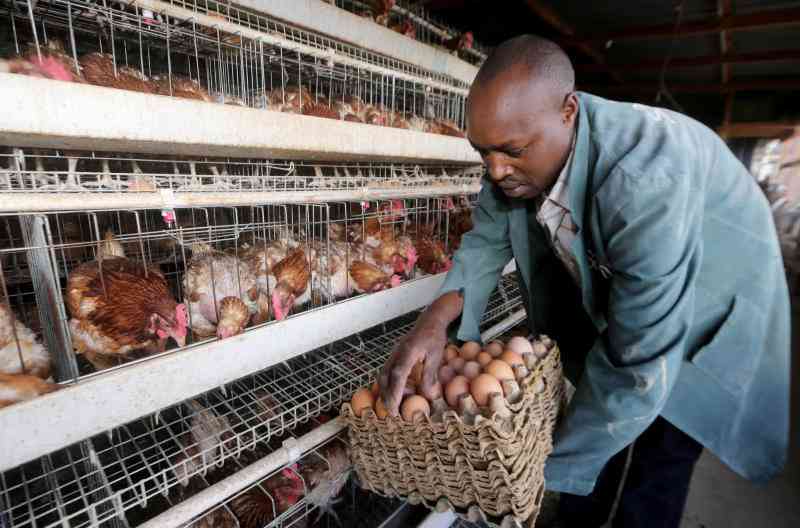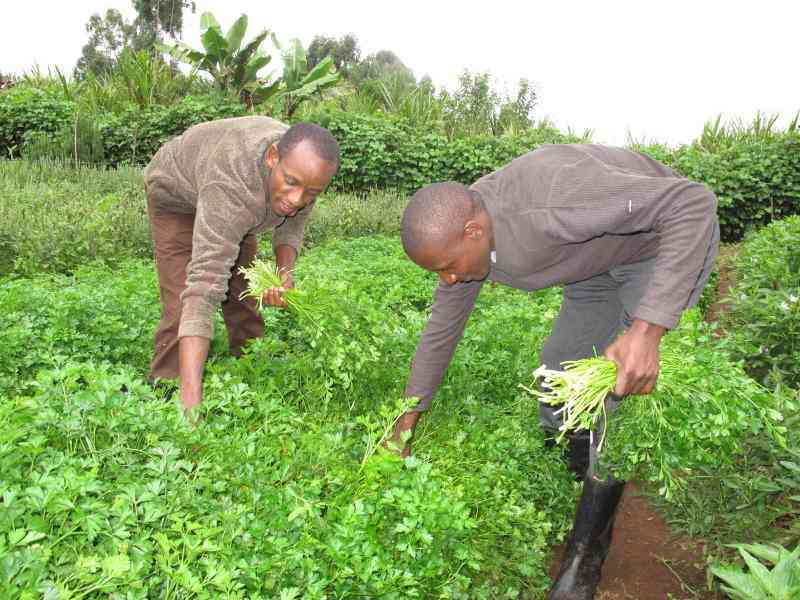What to do when rains become unpredictable
Mr Mark Kemboi was upbeat when he planted maize on his five acre-farm in Trans-Nzoia County in February. He had enjoyed a bumper harvest a year before, thanks to the heavy long rains the county experienced in 2018. The 2018 March to May long rains were reportedly the heaviest in the past 55 years. And so this year, Kemboi expected things to be the same.
It was, however, after a whole month of waiting that the rains finally came. Kemboi had since lost hope that the seed would ever germinate from the perched ground.
“After the lengthy drought in 2017, it had finally rained in 2018 and we thought the rain pattern had stabilised. That is why we prepared our farms and seed in readiness for the March rains this year. But the rains failed to come on time,” says Kemboi.
In April, the Kenya Meteorological Department, in an attempt to explain the prolonged drought, reportedly said the long rain bearing winds were sitting in Tanzania owing to too low pressure systems to push the winds northwards to Kenya.
Devastating experience
The delay caused significant losses to farmers.
“Not all the maize seed germinated when it finally rained. I had to replant in holes where the seed didn’t germinate. That’s why there is a difference in the stages of growth of my maize,” he says.
His woes embody those of millions of other farmers, who have been struggling to keep up with extreme weather patterns that have been characterised with delayed rains, unusually shorter rains than expected and sometimes, longer than usual rains that culminate in floods.
In a different yet equally devastating experience, Charles Osawa, who practices horticulture in Chemilil, Nandi County last week woke up to find half of his tomato garden swept away in floods.
According to the Chemilil farmer, some 1,500 plants have been destroyed in the ongoing pounding rains in the village, leaving behind 50 per cent loss in the wake of the downpour.
“It has been raining for seven days nonstop and water coming down Kware hill just behind my farm causes a runoff that destroys all the farms down the hill,” says Osawa.
He adds: “The hill used to be covered thickly with trees and we never used to experience such floods. But it has since been cleared for cultivation and there is no stopping of water when it rains.”
In a good harvest, Osawa makes up to Sh150 from every tomato plant. He moans the Sh200, 000 lost in the heavy downpour after investing heavily in the venture.
Counting losses
It wasn’t easy for the tomato farmer who planted during the dry season and spent a lot of money on irrigation. He was targeting the December festivities when tomatoes fetch a tidier sum in the market.
“I transplanted the tomatoes during the dry season and I used to spend a lot of money on water for irrigation. The plants were just starting to flower and I know I would have made a lot from it. But this won’t be the case now,” he says.
He is estimating more post-harvest losses because of the poor state of roads due to the heavy rainfall.
Last week, the weatherman warned that there will be heavy rains in many parts of the country which may trigger floods. Destruction has already been reported in Marsabit, North Rift and parts of Elgeyo Marakwet.
“I know the losses could be more now that all the major roads are impassable. This means I should be ready for more post-harvest losses,” says Osawa, who transports his produce to the market on a wheelchair.
The way forward
Prof John Gathenya, a lecturer at Jomo Kenyatta University of Agriculture and Technology (JKUAT), department of Soil, Water and Environmental Engineering warns farmers to prepare for even more extreme weather patterns.
He says the high intensity rainfall, high temperatures and even the unusual winds being experienced these days could be linked to climate change.
“Climate change is happening. We may not have enough data to prove this but the high temperatures, the increased rainfall intensity, the frosts, heat waves and even the strong winds are pointers to climate change,” says Gathenya.
Last week, The New Humanitarian reported the link between heavy rains and ‘record-breaking’ temperature changes in the Indian Ocean.
“The western Indian Ocean has been about two degrees warmer this month than the eastern Indian Ocean. As a result, higher evaporation off the African coastline is being dumped inland as rainfall,” reported The New Humanitarian.
Prof Gathenya warns farmers to prepare for worse times.
“The weather may be extreme in the next five or ten years. I have been measuring rain for many years now and I have been noticing the worrying trend,” says Gathenya.
The JKUAT researcher says he has been recording rain for many years at his home in Juja.
“The other day I recorded 58 milliliters of rain in 24 hours and I could already see significant runoff on the ground. What will happen in the next ten years or so when we receive 150 milliliters of rain in a day?” he poses.
He says the assumption that farmers are experiencing new rain patters is false.
“It is true that we experience delayed rains. Sometimes when the rains come, they are usually heavier than normal. But we have experienced these variables in past years,” says Gathenya.
The only thing that has changed, according to Gathenya, is the intense human activity on the environment that has predisposed the earth to extreme weather conditions.
“We have cut down trees. We have put up a lot of buildings such that the surface that used to absorb water many years ago has now become impermeable to rainfall and is causing surface water runoff,” he says.
Trainings at JKUAT
At JKUAT, farmers are trained on on nature based solutions to climate change such as the best crops to grow to adjust to various extreme weather conditions.
They are also taught on best soil practices that can increase permeability to avoid surface runoff.
“The one thing we insist on is the importance of listening to weather forecasting. In the past, the weatherman has been very reliable in predicting rainfall patterns,” says Prof Gathenya.
In the training on weather forecasting JKUAT’s Soil, Water and Environmental Engineering department invites traditional rain experts who act as weather ambassadors in their communities where they are reliable sources of weather information.
[email protected]
Want to get latest farming tips and videos?
Join Us
Share this article on social
 The Standard Group Plc is a multi-media organization
with investments in media platforms spanning newspaper print operations,
television, radio broadcasting, digital and online services. The Standard Group
is recognized as a leading multi-media house in Kenya with a key influence in
matters of national and international interest.
The Standard Group Plc is a multi-media organization
with investments in media platforms spanning newspaper print operations,
television, radio broadcasting, digital and online services. The Standard Group
is recognized as a leading multi-media house in Kenya with a key influence in
matters of national and international interest.
 The Standard Group Plc is a multi-media organization
with investments in media platforms spanning newspaper print operations,
television, radio broadcasting, digital and online services. The Standard Group
is recognized as a leading multi-media house in Kenya with a key influence in
matters of national and international interest.
The Standard Group Plc is a multi-media organization
with investments in media platforms spanning newspaper print operations,
television, radio broadcasting, digital and online services. The Standard Group
is recognized as a leading multi-media house in Kenya with a key influence in
matters of national and international interest.






